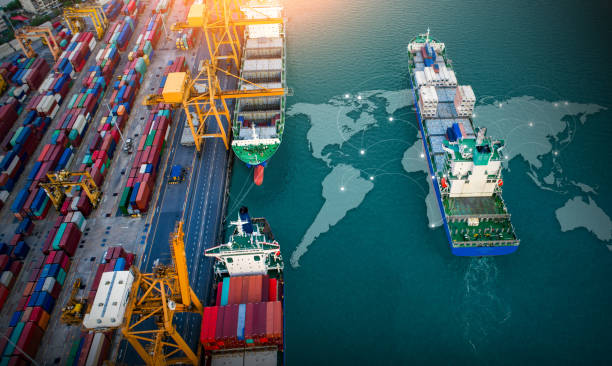world finance
How monetary transactions and trade relations are facilitated across international borders has undergone momentous transformations throughout history. From the inception of organized civilizations engaging in direct commodity exchange to the modern digitized economy interconnecting all national markets in real-time, the structure supporting commerce on a worldwide scale has progressively advanced in a complex fashion. This examination explores the path of developments that have shaped the present-day climate of global finance over centuries and inspects current dynamics and potential avenues for future progression. By understanding the journey traversing early barter societies to the sophisticated globalized marketplace of today, we can better appreciate both the opportunities and obstacles in ensuring open exchanges continue advancing worldwide prosperity.
The Evolution of a Global System from Antiquity to Modernity
In ancient civilizations, trade primarily occurred through directly swapping surplus inventories between communities in meticulous localized dealings. However, as cooperation expanded and specialization emerged, standardized monetary units began circulating to conduct multifaceted transactions more effectively. Prominent empires like Rome established early currency systems to facilitate extensive commerce within their territories. Meanwhile, as these empires grew and colonialism burgeoned, trade routes proliferated internationally while economic policies aligned between colonies and home nations.
The industrial uprisings markedly accelerated worldwide trade, with nations manufacturing vast outputs to peddle overseas in exchange for foreign currency and goods. Megaports evolved into global hubs connecting all world regions through shipping. Concurrently, as capital ventures multiplied internationally, pioneers established forerunners to contemporary organizations focused on stabilizing currencies and financing cross-border projects. The later stages of the 20th century ushered in a new epoch of liberalized commerce, with falling barriers promoting globalization. Rapid technological progress simultaneously joined once-disperse financial centers through networked digital exchanges.
Today’s highly synchronized international economic climate is the product of cumulative progress integrating separate regional economies into a unified system through historical shifts in diplomacy, transportation, industrialization, and data infrastructure.
Principal Institutions Guiding Global Capital Flows
Several leading institutions now help govern international capital circulation. Foremost among them, the International Monetary Fund monitors economic collaboration and provides financing stability to governments experiencing fiscal shortfalls. Established alongside the World Bank, the IMF aims to safeguard worldwide monetary cooperation. Comparatively, the World Bank Group allocates investments toward reducing poverty in emerging nations through development initiatives.
Regional multilateral development banks have also become significant. For example, the Asian Infrastructure Investment Bank finances infrastructure initiatives across Asia. Additionally, the European Bank for Reconstruction and Development provides support for emerging democracies. These organizations facilitate collaboration on a spectrum of issues, from exchange rate management to trade reforms to environmental sustainability standards.
While criticisms note flaws in governance structures and policy recommendations, most economists agree these institutions foster stability and growth overall. They help mitigate shocks that could destabilize global commerce by facilitating dialogue and relieving debt pressures. In the future, their roles may evolve further in response to demands for inclusive prosperity in an age of burgeoning technologies and climate change.
The Ascendance of Emerging Market Influence
While established powers like the United States and Europe still enact substantial sway globally, developing nations now represent an increasingly considerable share of worldwide GDP. In particular, China has rapidly become the second-largest national economy – and the foremost manufacturer of international supply chains. Neighboring India, too, has expanded significantly through competitive technology and service industries. Additionally, the grouping of fast-growing BRICS countries – Brazil, Russia, India, China, and South Africa – exhibit burgeoning economic might. These emerging markets drive industrial innovation and offer immense business opportunities. Their deepening integration into the globalized financial system will likely continue reshaping international trade flows and geopolitical dynamics.
Persistent Hurdles and Potential Paths Ahead
Of course, issues persist that could disrupt worldwide commerce if addressed. Recurring financial crises, geopolitical conflicts, health pandemics, and climate-induced natural disasters threaten stability. High debt loads and mounting inequality also endanger inclusive development in some regions. However, with cooperative multilateral solutions and a transition to more sustainable systems, significant possibilities exist to strengthen prosperity worldwide by expanding accessible capital, new green industries, and emerging digital infrastructures. Ongoing collaboration will determine whether global finance evolves to benefit all nations equitably.
Conclusion
In conclusion, the global financial architecture has come a long way since early forms of barter trade between local populations. Major institutions now offer frameworks to facilitate cooperation and open markets across all borders. Emerging powers play increasingly essential roles, while opportunities through new technologies hold potential. However, lingering risks warrant ongoing cooperation to ensure worldwide finance progresses sustainably and benefit every community equitably. Its future trajectory depends on multilateral efforts to strengthen resilience against threats while realizing possibilities for inclusive shared prosperity.
FAQs
What are some of the major international financial institutions?
The main ones are the International Monetary Fund, World Bank, and regional development banks like the Asian Infrastructure Investment Bank.
How has the global financial system evolved?
It has progressed from early barter systems between communities to a highly interconnected worldwide network facilitated by standardized currencies, growing trade routes, industrialization, and modern technologies.
What role do emerging economies play?
Countries like China, India, andthose in the BRICS bloc now account for a significant portion of global GDP and drive industries like manufacturing, services, and commodities.
What are some ongoing challenges?
Financial crises, high debt levels, inequality, and climate risks threaten stability if not adequately addressed through international coordination.
What does the future hold?
Opportunities in areas like sustainable development, digital innovation, and inclusive multilateral cooperation could strengthen prosperity, but stability relies on collaboratively managing persistent risks.






